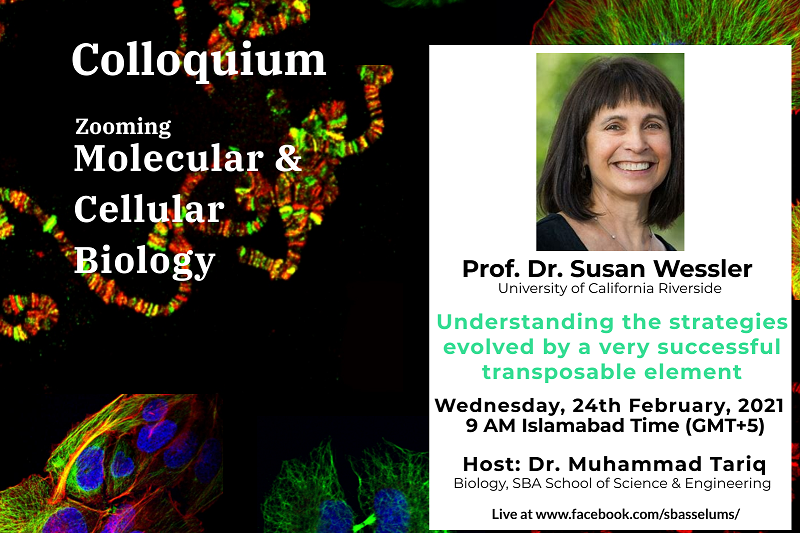
Understanding the Strategies Evolved by a Very Successful Transposable Element
Join us LIVE with Prof. Dr. Susan Wessler from University of California Riverside. Prof. Wessler talks about how transposons evade host defense in rice and increase their copy number without causing death of their hosts. Transposable elements, also known as jumping genes, are special class of genes that naturally exist in a silent state within genomes of every living organisms. They are a major threat to genome stability of a living organism and literally play a havoc with genome when they start jumping and lead to large scale mutations. Prof. Wessler shares about special class of transposons and how they amplify in rice. She is a highly accomplished plant biologist who is the recipient of several awards including the Stephen Hales Prize (2011) from the American Society of Plant Biologists, the Excellence in Science Award from FASEB (2012) and the McClintock Prize for Plant Genetics and Genome Studies (2015). She is a member of the National Academy of Sciences (1998), the American Academy of Arts and Sciences (2007), the American Philosophical Society (2013), and a Foreign Member of the Royal Society (2017).
Biography:
Susan Wessler is Distinguished Professor of Genetics and the Neil and Rochelle Campbell Chair for innovation in Science Education at the University of California Riverside. In 2011 she was elected Home Secretary of the U.S. National Academy of Sciences (NAS), the first women to hold this position in its 150-year history. She is a plant molecular geneticist known for her contributions to the field of transposon biology and plant genome evolution. A native of New York City, she received a Ph.D. in biochemistry from Cornell University (1980) and was a postdoctoral fellow at the Carnegie Institution of Washington (1980-1982). She began her career at the University of Georgia in 1983 where she remained until moving to UC Riverside in 2010.
Prof. Wessler has contributed extensively to educational and diversity initiatives. As a Howard Hughes Medical Institute Professor (2006), she adapted her research program for the classroom by developing the Dynamic Genome (DG) Course where incoming freshman can experience the excitement of scientific discovery. The DG course is currently taken by over 500 students / year. As NAS Home Secretary, she has spearheaded initiatives that have led to a 40% increase in the number of women elected to membership in the NAS.
She is the recipient of several awards including the Stephen Hales Prize (2011) from the American Society of Plant Biologists, the Excellence in Science Award from FASEB (2012) and the McClintock Prize for Plant Genetics and Genome Studies (2015). She is a member of the National Academy of Sciences (1998), the American Academy of Arts and Sciences (2007), the American Philosophical Society (2013), and a Foreign Member of the Royal Society (2017).

